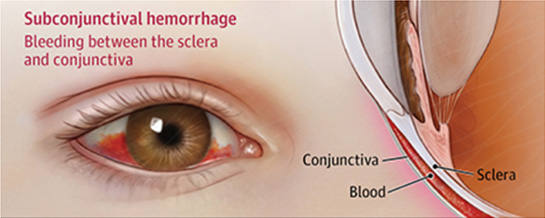How to Care for Your Child with Subconjunctival Hemorrhage
This leaflet will provide you with information about Subconjunctival Hemorrhage, causes, symptoms, diagnosis, treatment and home care advice.

What is Subconjunctival Hemorrhage (bleeding)?
Subconjunctival bleeding is a red spot on the white of the eye representing a collection of blood between the sclera and conjunctiva.
Subconjunctival bleeding can be caused by:
- Coughing, sneezing or vomiting
- Minor injury to the eye
- Rubbing the eye
What are the symptoms of Subconjunctival bleeding?
- Subconjunctival bleeding can look scary but usually cause no pain.
- Occasionally your child may have a foreign body sensation
- The spot gets typically bigger in the first 24-48 hrs before it starts to fade away.
How is Subconjunctival bleeding diagnosed?
The doctor will ask few questions about your child's health and examine your child. Usually, no further investigation or blood tests are required.
How is Subconjunctival bleeding treated?
No treatment is usually required. Most will go away within 1-3 weeks.
Sometimes if your child's eye feels irritated, your doctor may prescribe artificial tears drops to soothe the eye
Home care advice
- Reassure your child that the spot will fade on its own.
- The red spot on the eyeball may change colour as it heals. This is like a bruise on the skin, it may change from red to brown to purple to yellow.
- If your child wears contact lenses, avoid wearing them until the red spot has disappeared.
When should I seek medical advice?
Seek medical advice if your child:
- Has thick discharge coming from the eye.
- Has pain in the eye
- Has a change in vision.
- Is sensitive to light.
- Has the red spot in the eye after three weeks or gets a new one after it has healed.

